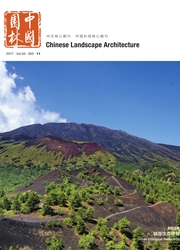

 中文摘要:
中文摘要:
破碎化的、孤立的城市附属绿地依然蕴含着生物多样性活力,这是土地的内在秩序,是不以人的意志为转移的生存智慧。在中国的西北地区,相对于以干草甸为主的自然景观原型生境特征,城市绿地具有更多样的、可优化的地被植物群落栖息演替的场地生境条件,而展示城市环境中土地的自然力量,需要借设计营建助一臂之力。生境营造的实践性研究是探索建成环境生态设计的方法和路径,场地的生境类型划分和分区是开展研究的重要基础。众多生境因子中,日照因子具有决定性影响。研究以西安建筑科技大学校园绿地为对象,研究采用参数化数字模拟和实验观测相结合的方法,通过对场地中植物在不同日照时数分区内生长形态和分布规律的分析,提出6种日照因子影响下的场地生境类型,及其生境分区的基本参数,并介入设计软件得以应用。
 英文摘要:
英文摘要:
The fragmentation and isolated urban affiliated green space still contains the vitality of biodiversity. This is the internal order of the land, which is existed as the wisdom and isn't transferred by man's volition. Compared with the natural environment which mainly contained meadow landscape in the northwest region of China, there were more diverse and optimized condition of ground cover plant community prototypes in urban green space habitat. And it needs the help of the power of design and construction to present the natural dynamic of the land in the urban environment. The practical research of habitat planning explored the method of ecological design and the path in the built environment. Habitat-site typology and zoning in the urban green space was the important foundation of research. In the numerous habitat factors, the sunshine factor has the most influence and effect on the site. The research regarded the campus green spaces in Xi'an University of Architecture and Technology as object, through the method of parameterized digital simulation combining with experimental observation. Six habitat typology under the influence of sunshine factor and basic parameters of the habitat zoning were proposed by the analysis of the distribution regularity and growth form for plants in different sunshine time partition, which was application with design software intervention.
 同期刊论文项目
同期刊论文项目
 同项目期刊论文
同项目期刊论文
 期刊信息
期刊信息
